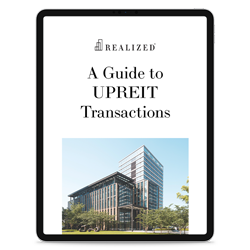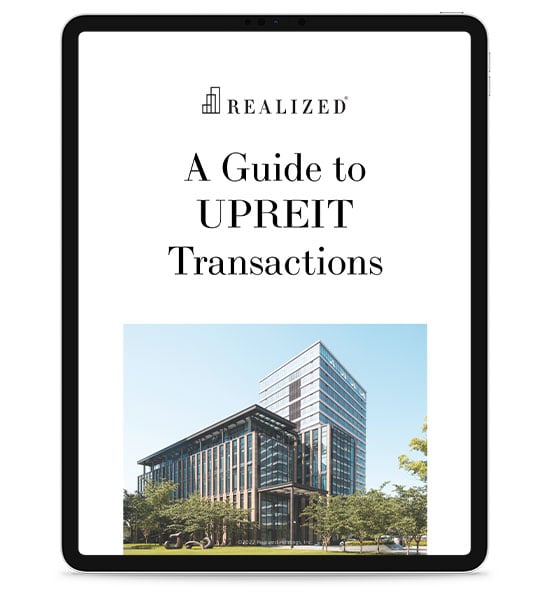
Due to rising property costs and decreased buying power, many Americans are now choosing to rent instead of owning a home. This shift in the housing market has led to the emergence of single-family rental real estate investment trusts, also known as SFR REITs. How do these investment vehicles work? What are the benefits and risks investors must consider? Below, Realized 1031 has shared a guide to help answer these questions. Keep reading to learn more.
What Are Single-Family Rental REITs?
A real estate investment trust (REIT) is a company that owns, operates, or finances income-producing real estate. Most traditional REITs focus on commercial buildings like malls, office spaces, or apartment complexes. However, Single-Family Rental REITs specialize in owning and managing detached, single-family homes that are rented to residential tenants.
These REITs typically acquire several homes at once. Then, the company provides the funds to renovate if needed. Once the properties are ready for occupancy, the REIT leases them to families, or individuals seeking the comfort and space of a stand-alone home without the commitment of buying.
SFR REITs emerged more than a decade ago, right after the 2008 financial crisis. There were people who had to foreclose their single-family homes, resulting in many of these dwellings available at low prices. REITs bought these properties en masse, and these companies eventually became publicly traded.
How Do Single-Family Rental REITs Work?
If you’re an investor considering putting your capital in an SFR REIT, it’s important to understand how this investment vehicle works to set your expectations.
1. Pooling Capital and Property Acquisition
REITs pool capital from investors and debt markets to buy single-family homes. Given their real estate investment acumen, these companies often target homes in desirable neighborhoods or cities where rental demand and appreciation potential are strong.
As a shareholder, you invest by purchasing REIT shares—not individual properties. Investors should review the REIT’s prospectus or offering documents to evaluate the portfolio’s property composition, geographic exposure, income strategy, and risk profile.
2. Property Management
Once acquired, the REIT manages the homes through internal or third-party property management teams, This includes the following and more.
- Repairs
- Maintenance
- Rent Collection
- Tenant Screening
- Customer Service
- Administrative Tasks
Today, some REITs leverage technology platforms to streamline operations, improving tenant experience and minimizing operational costs.
3. Revenue Generation and Distribution
REITs earn income primarily through rental payments, though additional revenue streams may include late fees, application fees, and premium services (e.g., pet rent, smart-home features). On a regular basis, the REIT will distribute these earnings to the shareholders. By law, all REITs are required to distribute at least 90% of their taxable income to the shareholders. This amount will be diminished by operating expenses such as maintenance and property taxes.
Benefits of Single Family REITs
Thanks to the following advantages of SFR REITs, many investors have found these investment vehicles appealing.
- Passive Income: REITs are in charge of the management of the single-family homes. Investors simply have to wait for the dividends to be distributed.
- Liquidity: Publicly traded SRF REIT shares can be bought and sold like stocks, providing more liquidity than owning a real estate asset outright.
- Professional Management: Properties are managed by experienced professionals—either internal or third-party—to handle day-to-day operations, including maintenance, leasing, and tenant services.
- Potential for Growth: Given the growing rental demand for single-family homes, there’s a high chance of increased property values and rental income.
REIT distributions may include a mix of ordinary income, capital gains, and return of capital, depending on the REIT’s income sources and accounting.
Risks and Challenges to Consider
Like most other types of investments, SFR REITs do have their own set of challenges and issues you’ll need to be aware of. Here are a few examples.
- Market Downturns: As stable as single-family homes are, they are still not immune to market downturns. Rising interest rates, for example, could reduce the overall rental income.
- Increased Operational Costs: The increase in costs of home maintenance products and service, property taxes, and insurance premiums can also lower the profitability of the SFT REIT.
- Regulatory Risks: New laws or changes in rent control regulations could pose a risk to the REIT’s operations and income.
Wrapping Up: What Are Single-family REITs?
SFR REITs are investment vehicles that own single-family homes for rent. As an investor, you own shares of the REIT and earn dividends through the potential income-generating activities of the underlying property. You also gain other benefits, such as hands-off involvement and increased liquidity (for publicly traded SFR REITs), which makes SFR REITs appealing to investors seeking exposure to residential real estate without direct ownership responsibilities. Before entering a REIT, make sure to consult with financial advisors to determine if this type of strategy is suitable for your investment goals.
The tax and estate planning information offered by the advisor is general in nature. It is provided for informational purposes only and should not be construed as legal or tax advice. Always consult an attorney or tax professional regarding your specific legal or tax situation.
Article written by: Story Amplify. Story Amplify is a marketing agency that offers services such as copywriting across industries, including financial services, real estate investment services, and miscellaneous small businesses.
Sources:
https://money.usnews.com/investing/articles/best-residential-reits-to-buy-today
https://www.tandfonline.com/doi/abs/10.1080/07352166.2019.1662728



